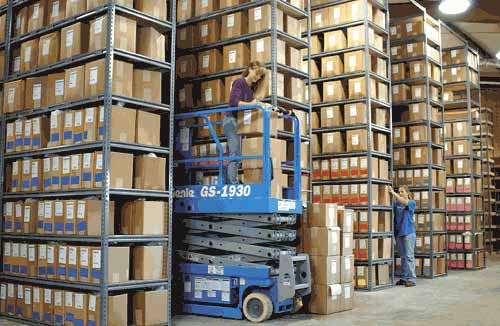Businesses that sell goods, aka retailers, face many unique challenges that professional services businesses do not. One of the most complex can be managing their inventory, which requires learning a new language that includes LIFO, FIFO, COGs, ACOGs, SKUs, NOS, JIT and many more factors. At its core, however, managing inventory better comes down to three critical factors.
How To Control Inventory Shrinkage
- Use electronic surveillance such as security mirrors, video cameras, micro tags
- Make spot checks of cash register drawers.
- Insert electronic tags in inventory items most prone to be surreptitiously removed.
- Make sure cashiers are well trained on all technology and keep the door open for them to discuss dissatisfaction with their jobs.
- Consider providing higher wages to attract a more dedicated group of employees.
- Take regular physical inventory counts and be aware of the precise amount of inventory shrinkage that exists in your company.
- Use personnel to perform physical inventory counts who are not the same people who would have access to removing inventory items.
- In a retail environment, make sure you have enough employees to monitor the actions of customers. Then, have procedures in place for reporting suspicious activity of customers.
- Consider a policy whereby no employee is left alone int eh business premises.
- Have procedures in place to verify cash refunds.
- Perform reference checks on all employees.
- Use a point-of-sale computerized cash register system for tracking and updating inventory instantly.
How to Take a Physical Inventory Count
For more detailed information on these steps, see www.accountingtools.com/procedure-inventory-count.
- Order numbered count tags if they are to be used
- Preview inventory in advance to make sure it is ready to count
- Pre-count infrequently used inventory and seal
- Complete outstanding data entry transactions that affect inventory count
- Coordinate inventory count with all outside storage locations
- Freeze inventory activities
- Instruct personnel who will be conducting the count
- Issue count tags if you are using these
- Count inventory – if using tags, affix tag to each area as it is counted
- Verify all areas have been counted (and tagged, if applicable)
- Prepare report of inventory count
- Analyze report and investigate unusual results
How to Use Manufacturing Leftovers
After a manufacturing job is completed, there are often some unused parts or materials left over. Those extra odds and ends can be difficult to account for in your inventory management records. Fishbowl CMO Kirk Tanner explains exactly what you can do with these manufacturing leftovers:
- Return to Assets: If you have extra nuts and bolts or other materials that are easy to use elsewhere, it’s probably a good idea to save them and add them back into your inventory for later.
- Expense: If you have extra blocks of wood that were sawed off of larger beams, those may not be as useful and can likely be thrown away and expensed.
- Add to Product Cost: If you have items that were damaged during the manufacturing process or other things that are difficult or impossible to reuse, it might be a good idea to go ahead and add them to the cost of the product they were intended for. That will help you get a better idea of how much profit you can actually expect from each product.
Thanks for reading CPA Practice Advisor!
Subscribe Already registered? Log In
Need more information? Read the FAQs
Tags: Accounting




